The Palm Leaf Oxalis is a beautiful, easy-to-care-for succulent that is a step up for beginner succulent students. With elegant fronds and flowers that dwarf the main body of the plant, the Palm Leaf Oxalis is probably one of the cutest succulents you’ll see.
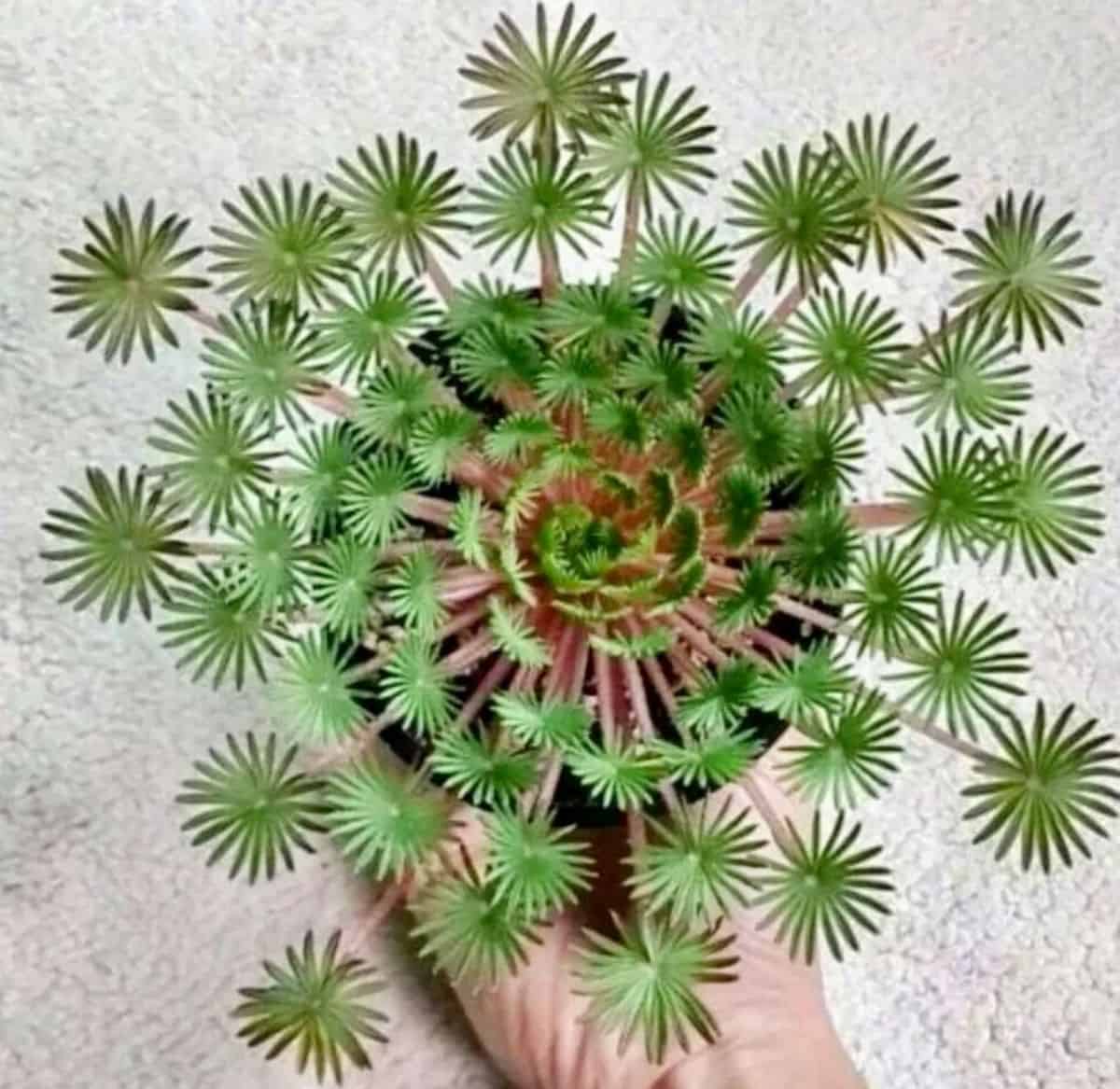
Each leaf can have up to 20 different segments which is what gives this oxalis its name. Tiny hairs protect the tender leaves from the sun which helps this plant thrive in its native climate, the deserts of Karoo found in South Africa. One of the most fascinating features of this slow-growing succulent is that the leaves open in the morning and close in the evening. It also has a different dormancy schedule: Palm Leaf Oxalis becomes dormant during the heat of summer and is more active in winter.
In this care guide, you’ll find some quick facts about the Palm Leaf Oxalis as well as a breakdown of some of the most common questions and best care tips.
Are you ready to begin?
Jump to:
Oxalis Quick Facts
| Scientific Name | Oxalis palmifrons (Salter) |
| Common Name | Palm Leaf Oxalis or False Shamrock Plant |
| Position | Full sun |
| Watering | Only when the soil is dry |
| Soil | Sandy and acidic |
| Spread and Growth | Will self-propagate; maximum diameter is two feet. |
| Flowering | Flowers in spring; white, pink, or yellow flowers. |
| Pruning | After blooming, use sharp scissors or tool to cut off dead blooms and leaves. |
| Repotting and Propagating | Sends off shoots that can be repotted or split the plant. |
| Poison Guidelines | If your pet eats more than a few leaves, it would be wise to call your local veterinary clinic. |
Where to Buy Palm Leaf Oxalis
Origin of the False Shamrock
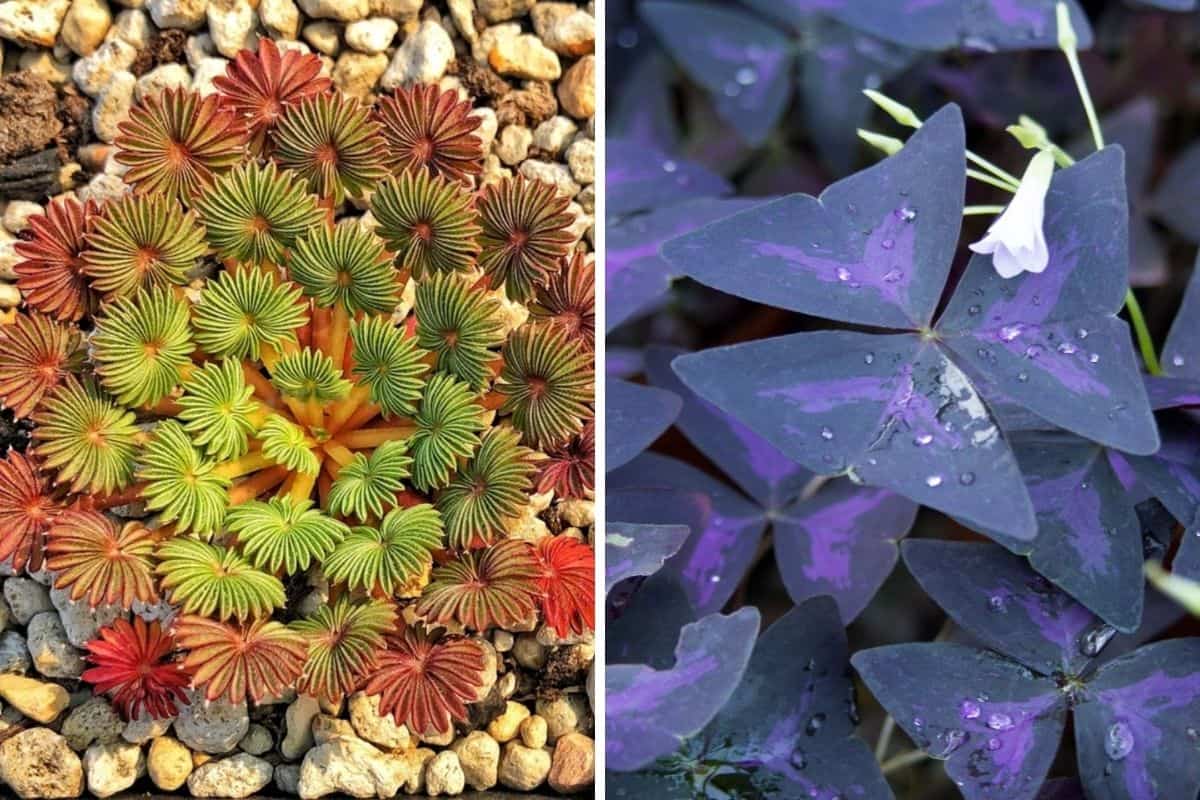
Palm Leaf Oxalis has another interesting name thanks to the fact that it belongs to the Oxalidaceae family: the False Shamrock. In the photo above, the plant on the right is the oxalis species that earned the name False Shamrock, however, the shamrock itself is also a part of this family. Talk about variety!
On the left, is the Palm Leaf Oxalis. There are many variations in colors but most of the Oxalis palmifrons species are green in the center with a purple tinge or full purple coloring towards the edges of the leaves. Some variations even have red and orange colors!
Oxalidaceae is known to have well over 200 species found in Africa alone. The oldest, and one of the few records of the Palm Leaf Oxalis was written by the man that discovered the plant, T.M. Salter. Over time, many species have appeared which means that the number of plants in this genus could be well over 500!
In the Great Karoo desert, these little plants are actually very invasive. Often, they are classified as a weed and will self-propagate. This results in the desert looking as though it has fluffy green blankets all over the place.
(include image of Karoo desert with palmifrons)
Indoor or outdoor?
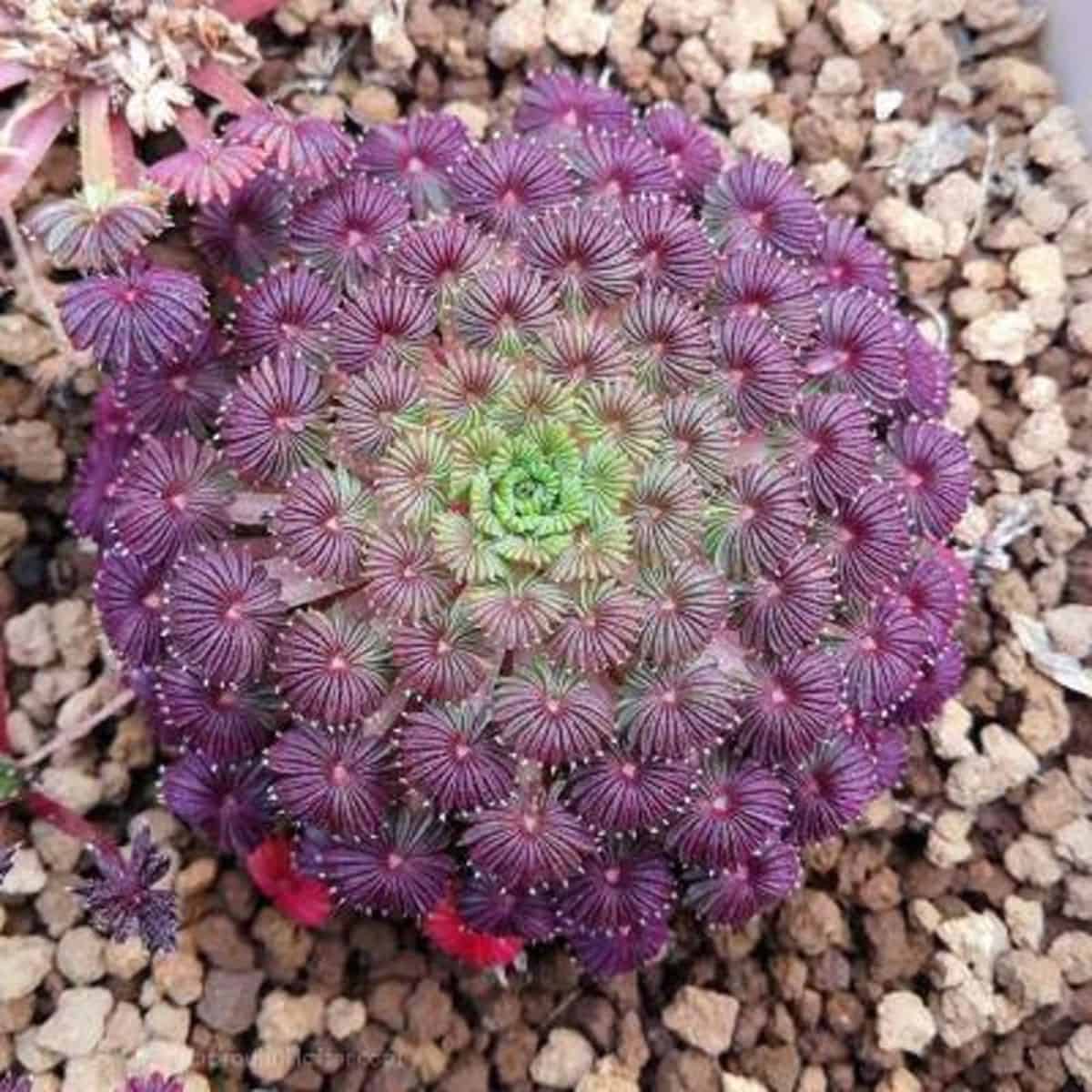
There’s not really one answer to this question. Can you grow oxalis palmifrons inside? Yes. Will it grow at its normal rate? Definitely not. The Palm Leaf Oxalis is a VERY slow growing plant, and it needs direct sunlight. If you choose to grow your Palm Leaf Oxalis inside, try placing it on a windowsill or where it could get the must sunlight in your home.
If you are going to grow and propagate your oxalis outside, it’s best to put it in a deep pot to avoid root and bulb rot and place it in direct sunlight. Keep in mind that when you first start growing this succulent, there must be shade: young plants have a difficult time without protection from the sun as they haven’t fully grown their protective hairs yet.
Either way, a Palm Leaf Oxalis will survive both indoors and outdoors as long as it is taken care of.
Soil Type and Watering
While many succulents are thought of as hardy, there are several soft succulents that need a little extra attention. The soil for a Palm Leaf Oxalis needs to remain loose so adding some rocks to the dirt can help with that. Make sure that the soil stays just slightly wet and only water this plant from the bottom. What does that mean?
Bottom watering is when you place the pot in a tray of water (make sure the pot has drainage holes) and allow the water to follow a cool trick called the capillary effect. With a mix of loose soil and rocks, the water literally travels up through the dirt until it can’t travel any further.
This is a great way to make sure that you aren’t overwatering or underwatering your oxalis. In the same way, you must be aware of when this plant needs to be fed. If the bulb is in its summer dormant stage, don’t feed the plant: the bulbs have to rest in order to continue growing. When the Palm Leaf Oxalis isn’t dormant, feed it monthly at half of the fertilizer strength that is suggested with whatever fertilizer you normally use.
How big does a Palm Leaf Oxalis get?
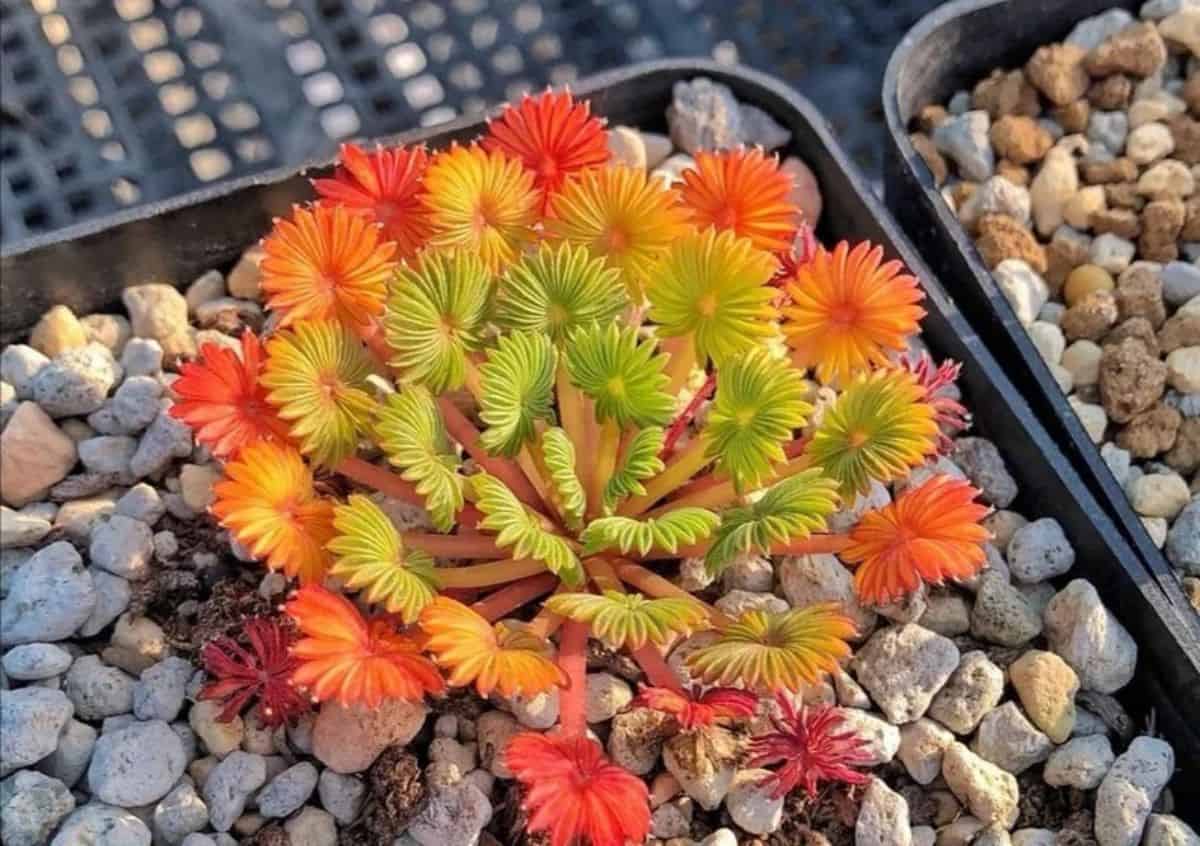
This is where things get funny. Not only is this succulent overshadowed by flowers that look way too big, but it also grows at a snail’s pace of 2.4 in/yr. Since it grows so slowly, you can keep the plant small by trimming it back since it would take almost ten years for it to reach its full size of two feet in diameter.
How do you propagate a Palm Leaf Oxalis?
Like most succulents, you take a leaf, throw it on some dirt, keep the soil damp, and voila! A new plant to add to your plant army. However, there are a few key differences because of how delicate the palm leaf oxalis can be.
When you are ready to start propagating, it is a good idea to split the plant into smaller pieces. There is also the option of repotting an offshoot without damaging the parent plant. If you obtain seeds from your oxalis, you can also plant those as well.
No matter what option you choose, keep a freshly propagated palm leaf oxalis out of direct sunlight until it begins to grow new leaves. Remember, the plant has to heal any open wounds and the sun can singe the open area and kill it!
Conclusion
Are you ready to buy a Palm Leaf Oxalis? Your local garden store might have some, but if not, check out Etsy, eBay, or this handy rare plant store to start growing your own.
Even though the Palm Leaf Oxalis has a few more requirements compared to your everyday hens-and-chicks, it is still an extremely easy succulent to grow. Yes, a little more care is needed for watering and feeding, and the soil has to stay loose, but those are easy changes to include in taking care of your plant army.
Happy planting!


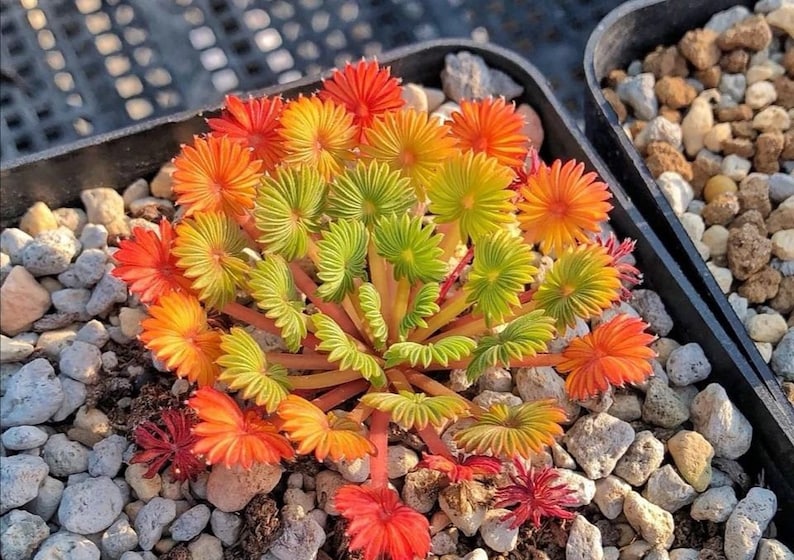
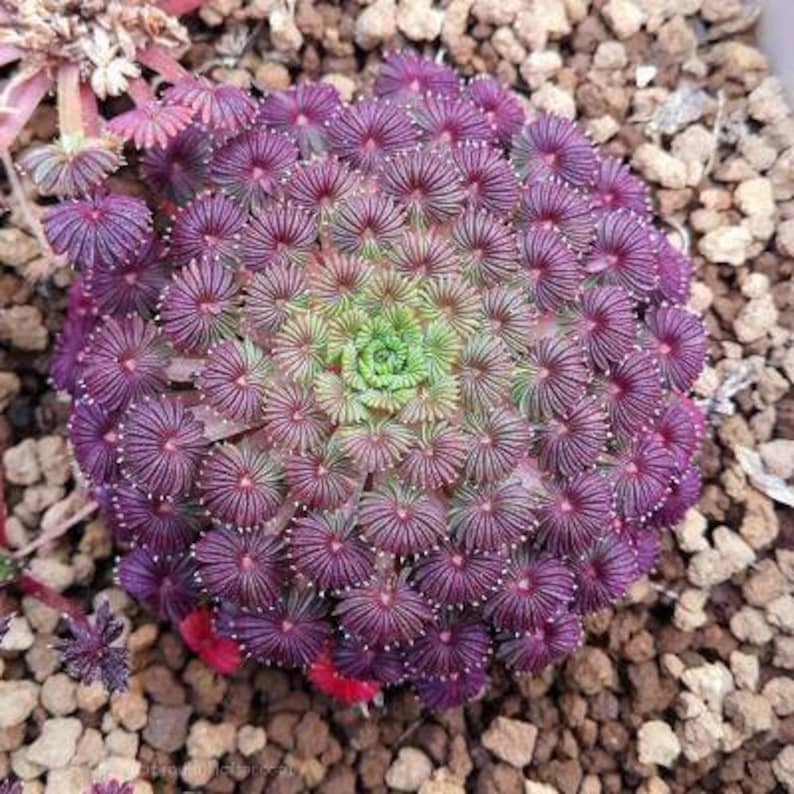
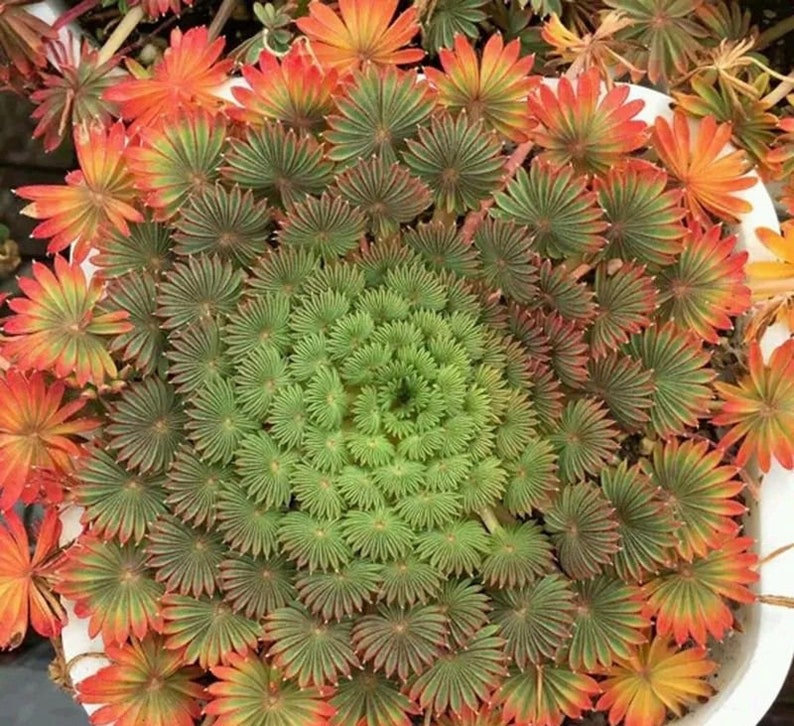
Leave a Reply